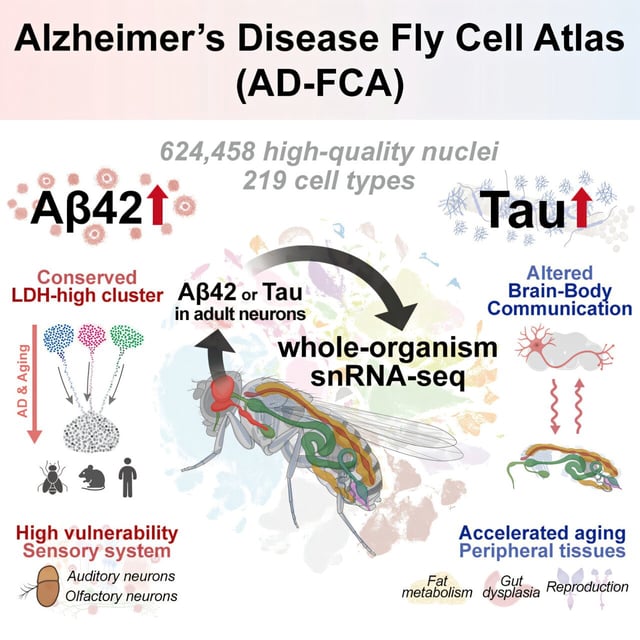Overview
- The Alzheimer’s Disease Fly Cell Atlas, profiling 219 cell types, uncovers how Aβ42 and Tau proteins affect the whole body, not just the brain.
- Aβ42 primarily damages sensory neurons, including those responsible for vision, hearing, and smell, aligning with early symptoms of Alzheimer’s in humans.
- Tau expression disrupts fat metabolism, digestion, and fecundity, mimicking accelerated aging and systemic degeneration.
- Neuronal connectivity and brain-body signaling pathways are significantly impaired in Tau-expressing flies, highlighting disrupted communication between the brain and other organs.
- This publicly available atlas serves as a foundational resource for identifying systemic biomarkers and developing holistic Alzheimer’s treatments.

